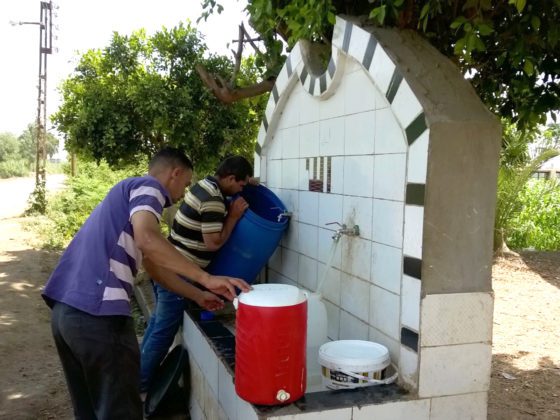Professor Sharon Megdal is the director of The University of Arizona Water Resources Research Center and a professor in the Department of Environmental Science at the same university. Her work focuses on water policy and management. Due to the corona virus lockdown in April, Megdal gave a virtual talk as part of the Global Water Initiative’s Earth week celebration, and also one of the World Water Events. We talked to her afterwards.
In your talk you emphasized that managing groundwater is a wicked problem. What exactly did you mean, and can you illustrate that with some of the characteristics of groundwater?
As I discussed in my seminar, wicked water problems typically don’t have a single solution or even a clear pathway to solutions. Some of the reasons for this have to do with incomplete or contradictory knowledge, the number of people involved, and potentially large economic burdens. Because groundwater is invisible, it is difficult to know how much is available and its quality. So, incomplete knowledge is likely to be the case. The system of rights to use groundwater can be complicated and involve many players. There can be a large economic burden associated with figuring out how to achieve a region’s groundwater use goals, assuming the goals can be clearly articulated. The United States system of water governance and particularly groundwater governance is highly decentralized. Given that in many cases groundwater is not replenished by nature at the rate it is used, there is a need to understand what utilization rates imply for the long-term sustainability of the resource. The desire to meet near-term economic objectives can mean less long-term reliability of the resource. Groundwater tends to be managed locally. There are so many factors to consider in developing groundwater use policy. To me it seems like a lot of work remains to be done in figuring out how to manage groundwater.


You discussed the cross-national management of groundwater resources, and you have been involved in bilateral study between the United States and Mexico. In your discussion you emphasized that one of the important contributions of this collaboration was the sharing of scientific data about the groundwater resources that crossed into both countries? While significant, this suggests that we are only at the very beginning of a process that might lead to joint-management of a common resource. Why is this? Why is this so difficult? And what can we, at best, expect?
Because groundwater is invisible, it is important that two parties who share groundwater resources develop a common understanding of groundwater availability, use and aquifer characteristics. This is what the Transboundary Aquifer Assessment Program has focused on for several years. Despite budgetary challenges, we have made some progress in developing a common understanding for some shared aquifers. Getting to the joint management is a big leap. It involves agreeing to matters related to use of the resource. When working across sovereign nations’ boundaries, approaching this can involve very different water rights and governance systems, including existing regulatory structures. And then you may have different languages, cultural characteristic, and socioeconomic considerations to factor. Willingness to compromise, good communication, and mutual trust and respect are all necessary to develop binational resources utilization plans. It is hard work and will take time. It is important not to have the conclusions before the process of developing the common understanding, which is where I started this response. Therefore, both patience and persistence will also be required if sovereign nations are to develop a joint approach to utilizing a finite resource.
You have also studied the Israeli-Palestinian groundwater challenges, what have you taken away from that experience that is relevant for groundwater management in general?
If you look at my prior two answers, you will see some of the conditions that are important to identifying pathways to solutions to groundwater challenges. The Middle East region on which I focus, which includes Israel, the Palestinian Territories, and Jordan, has scarcity of natural water resources, including but not limited to groundwater. An additional characteristic of some wicked water problems can be the interconnected nature of the water problems with other problems. Geopolitical considerations come into play in this region. My experiences in this region and also along the border shared by the United States and Mexico underscore the importance of functioning mechanisms for cooperation and communication. Without such, it will be difficult to work on identifying and implementing a suite of solutions. In fact, without such mechanisms, it will be difficult to work on water challenges in just about any situation.
Here is a link to the slides from Sharon Megdal’s talk.





